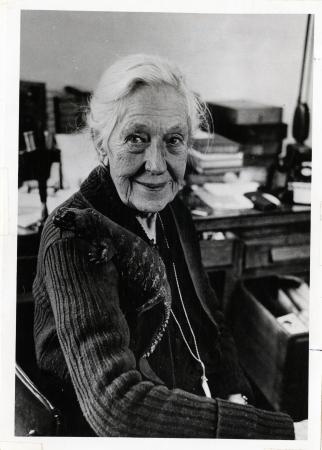For Women’s History Month, we’re joining the Biodiversity Heritage Library’s Her Natural History: A Celebration of Women in Natural History campaign to highlight women in natural history in our collections.

Doris Holmes Blake was a coleopterist, specializing in speci Chrysomelidae (leaf beetles). She earned her M.A. in zoology from Radcliffe College in 1917, and two years later, Blake began her career in entomology as a clerk at the Department of Agriculture in the Bureau of Entomology with the Division of Truck Crops Insects. Eventually, she was able to attain a junior entomologist position, and in 1928, she began working at the U.S. National Museum under Eugene A. Schwarz. That same year, she gave birth to a daughter, shortly after losing an infant son the year prior. Rather than stay home with the baby, she hired a nurse and returned to work.
Blake's paid employment at the Smithsonian did not last long. In 1933, new federal regulations limited families from having more than one person working in the federal government. Since her husband, botanist Sidney Blake, worked at the Department of Agriculture, Doris Blake, like many wives at the time, was the one to give up her job. But Blake remained connected to the Smithsonian, lending her expertise as a collaborator, researcher, and scientific illustrator until her death in 1978. Blake published ninety-six papers and proposed twenty-five genera and 818 species group names. Her work in scientific illustrations remains visible and available to researchers in her papers, as well as her husband’s records, located at the Archives.

Although Blake had worked without pay since the 1930s, she was at the top of the museum. In the attic, that is. The space was not ideal due to the cold winters and hot summers, but she found a positive in the lack of distractions. In the last fifteen years of her career, she was provided a workspace in the Herpetology Department. She was relied on by many for her contributions to entomology. Additionally, she was remembered to be a great conversationalist, maintained a diary written in German script, and not to mention her potty trained eighteen-inch African lizard (genus Uromastyx) was known to be quite at home in her office. Talk about a natural at natural history!

Related Collections
- Doris Holmes Blake Papers, 1899-1985, Record Unit 7310, Smithsonian Institution Archives
Related Resources
- "Celebrating Women's History Month with #HerNaturalHistory," by Emily Niekrasz, The Bigger Picture, Smithsonian Institution Archives
- "How a 51 Year Old Field Notebook Triggered an Investigation at the Smithsonian," by Sarah Allen, Smithsonian Collections Blog
- Proceedings of the Entomological Society of Washington, Volume 83, p. 544-564, Biodiversity Heritage Library
- "Women in Science Wednesday: Wikipedia Edition, Part 1"by Effie Kapsalis, The Bigger Picture, Smithsonian Institution Archives
Produced by the Smithsonian Institution Archives. For copyright questions, please see the Terms of Use.

Leave a Comment